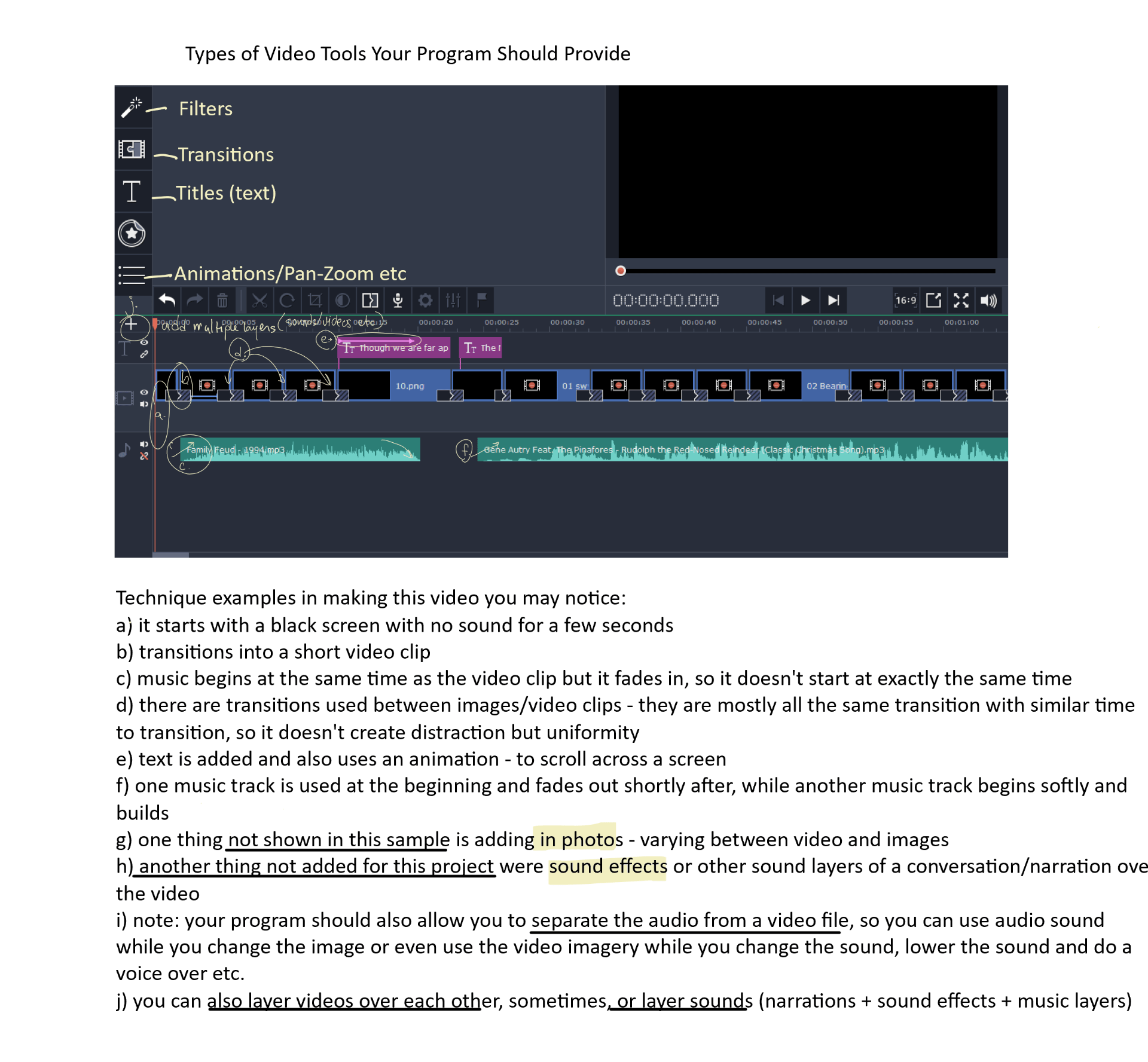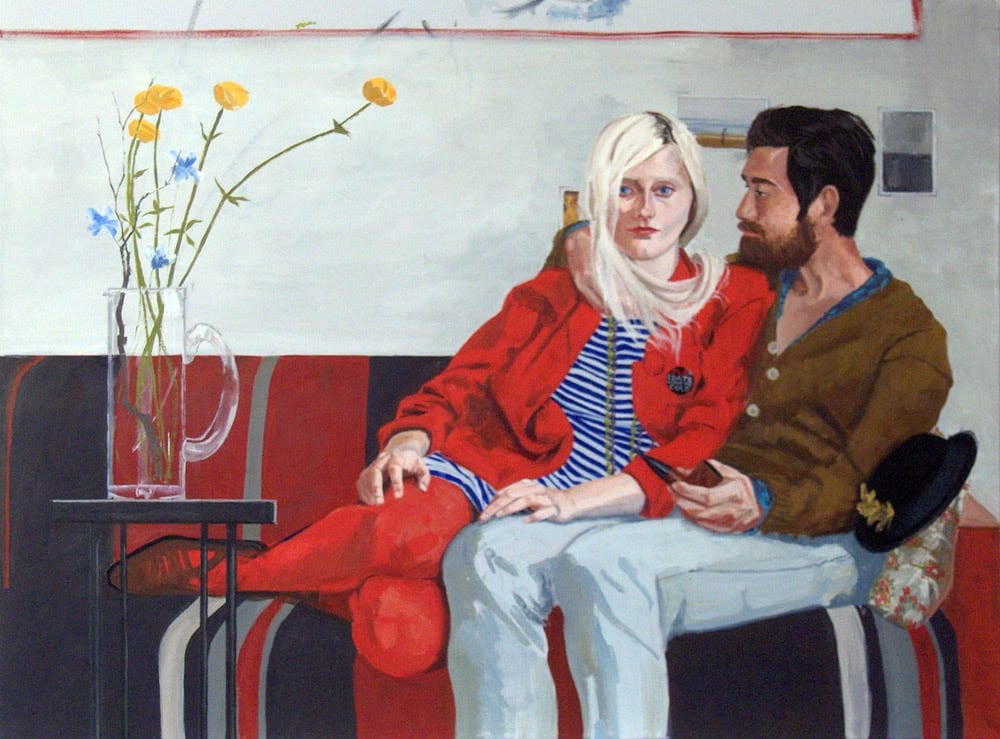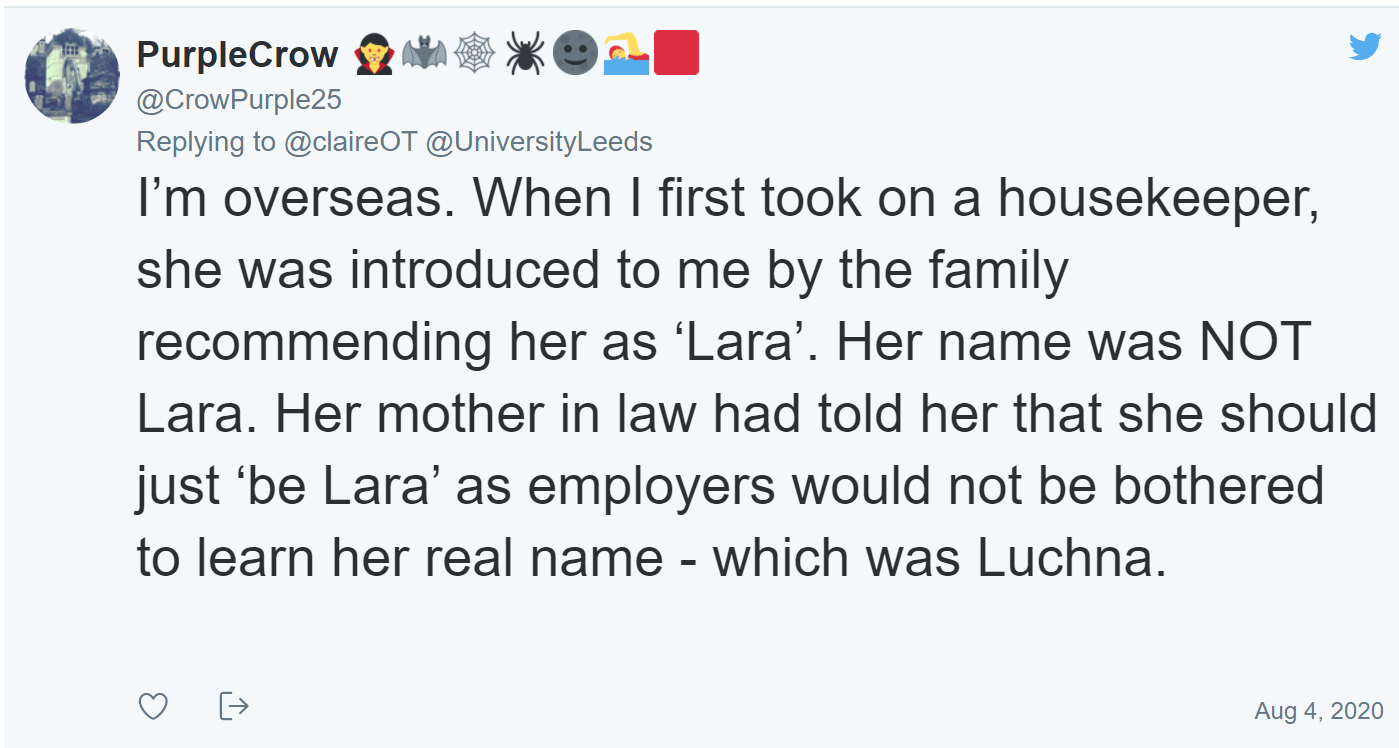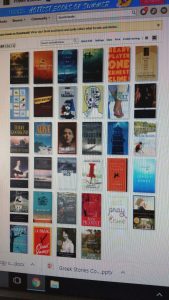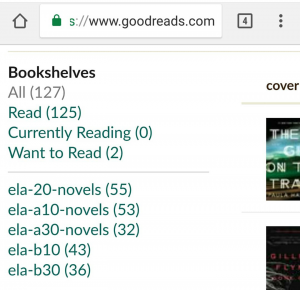Protected: ELA B30 AR Tasks to Choose From
B7.1 Assignment: Multimedia of Social Issue
After having reviewed the techniques and tools used to create a listening text like Podcasts, your final assignment is to create your own Visual text (video), which will include these similar types of tools to develop.
Sample Viral Videos on Social Change:
You can view/skim some video examples to see what techniques and formatting of their videos they used to best capture their audience’s attention and draw a wide audience to spread their message.
-
- Ten Viral Videos for Social Change: link here
- How to Make the World’s Most Viral Video – Kony 2012 Analysis (3.41 long)
- How To Video – How to Make Video Inspiring Social Change: focus on the RESOLVE method: relatable, emotive, simple, original, lasting, visual, and empowering (4 mins long)
- Video Storytelling – How to Drive Connection Through Narrative: website includes suggestions for effective development of videos
- Sample Viral Video with 15 million views – check out its organization and characteristics
Student Examples:
The following videos have been shared by former students who understand seeing a sample of a project helps give you a good idea of how to develop one yourself.
As you view them, consider the following qualities of the constructed videos:
- what their beginnings and endings look like, in particular. These are often the least considered or developed parts of the videos, but leave a significant impact on viewers.
- A beginning might start with a title slide and title or it begins in a more dramatic and unclear manner to catch a viewer’s attention and then narrow into the focus of the video.
- Endings might include a simple message in text letters on final slides or it has music building for an emotionally convincing end and a narrator’s voice to impact readers.
- You can also consider things like the quality of videos used or sound recordings.
- Some student projects have included video that was recorded off an iPad screen, or over-pixelated video, or better quality video that’s screen recorded or downloaded straight from a video source.
- The tools available to use by your video making program:
- transition types
- font styles, sizes, colours
Supports:
- Instructional Video: Overview of the characteristics and techniques to consider using to develop your video
- ELA A10 Blog Post with many links to sound effects or video websites
There are resources at this blog post you may find useful to develop your video project. Sound effect websites, background mood music, images and video portions that are CreativeCommons and useable for your project. - The many elements to consider using in your multimedia video. Click to enlarge and then click again to zoom into it.
Sample Media Projects from this Assignment – developed by former students who’ve given consent for you to view them for ideas.
Protected: ELA: Common Resources/References
Hamlet – Independent Reading/Listening option
If you’re unable to join our class group in reading/acting out the play, you could benefit from a dramatic performance recorded as an audiobook. This version of audio narration of the play is performed by the actors of a famous film version of Hamlet. It includes the dramatic sound effects and music in the background to make it a realistic experience for you in reading through the play on your own.
The audiobook is one single file, but I’ve separated it so you can jump to the different Acts for convenience.
Act 1 (start – 51:23 minutes in)
Act 2 (51:23 – 1:32:24)
Act 3 (1:32:24 – 2:25:51)
Act 4 (2:25:51 – 3:07:38)
Act 5 (3:07:38 – end)
B30 A3 Love and Relationships – supports
This first half of B30 continues to study the Human Experience – one of the most essential parts of that is our interactions with each other in the form of relationships. One of the most obvious reasons why the entertainment industry is so popular and financially successful is because the audience is drawn to unique and complicated relationships between characters.
Resources for this section:
- Pg 1: Big Ideas – choose any 7 to respond to. You can write out responses, type them into a shared document, or audio record them and share them. Alone or with a partner(s).

- Pg 2: Concept Mapping – Collaboration in Microsoft Whiteboard
Using Microsoft Whiteboard on your laptops, you can join in online groups to develop these concept maps together.- The Whiteboard is connected to your Sunwest email account. Login with that info.
- One person in the group can Create a new Whiteboard and Share it directly to a Breakout Room in Teams ELA B30. Then anyone in that Breakout Room can access and contribute to the Whiteboard.
(Post to Teams > Select Team > Select Breakout Room.) - Or you can Share it to someone’s Sunwest Email address.

- pg 3 Self Assessment – approach towards relationships
Using the scales given, identify where on the scale from one extreme to the next, you’d position yourself.
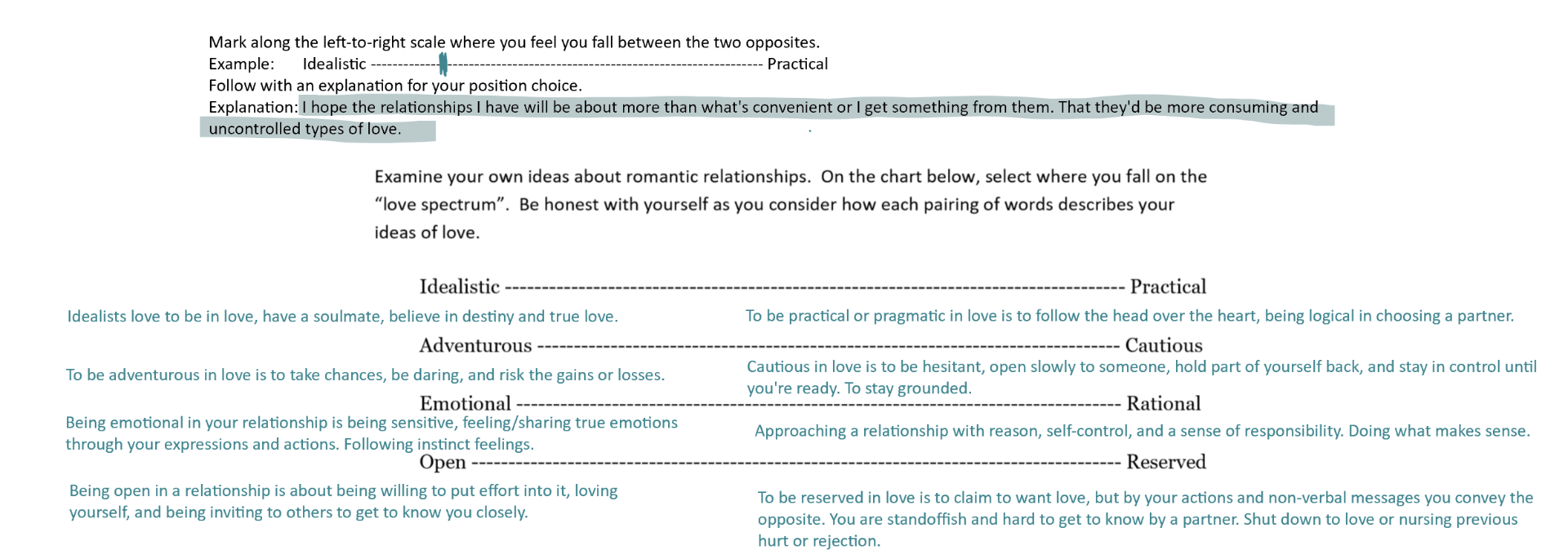
- pg 4 Visualization Pre-View: Porphyria’s Lover
What do you think is happening in this image?
-
- Pg 5 “Porphyria’s Lover” Dramatic Monologue:
Audio narration of the poem (if it helps you for comprehension)
- Pg 5 “Porphyria’s Lover” Dramatic Monologue:
- After Reading Questions: Question 5 Writing Body Paragraph (practice)
- pg 10 Compose and Create: Google Doc link
Remember, you must be logged into your Gmail account to leave your comments, so they show up and can be attributed to you.
B30 Script Writing Support
If you’re about to try writing your own stage play, some of the following resources may help you.
Document Templates for Kenaston Student:
- A2.1 Script Writing Template Doc for SS 2019 (You can download this Word doc and upload to Google Docs if you’d rather use that writing format)
- A2.1 Script Writing – three scene template (This could help you outline/plan your beginning, middle, and end of your script writing.)
To see samples of short stage scripts, try these:
- Duck Tale stage play sample pages (you can recognize how the page/parts of it are formatted)
- YPF Sample Script (start reading page 1 for page format)

ELA B30 A1 Self Identity (media resources)
Here are some links to help you explore the texts and themes within this section.
“By Any Other Name” Santha Rau – essay text pdf
- Website: pronunciations of names by country
- Twitter Collection (Waldner assembled): Anglocized Names – personal. current examples
- Article: How Much Racism do you Face Everyday?
Discussion on unintended bias encounters, known as “microaggressions”
Path B: Options for more practice or choice of poem(s)
There are other poems that reveal an author’s search for their self-identity and their place in their society.
Identity Poems in Shared Google Doc – join here to share your comments as you read three of the poems.
- “An Introduction” poem – Kamala Das
- Waldner recorded “An Introduction” audio of poem
-
- “I am Alien in Africa and Everywhere” poem – Dennis Brutus
- Brutus was a prisoner alongside Nelson Mandela in South Africa. He lived in the United States for a time, exiled from his home country. In this video, you could hear the voice of the writer for this poem.
- Waldner recorded “I am Alien in Africa and Everywhere” audio of poem
- “Home” poem Fred D’Aguiar – read along with the poem in the article below
- Podcast: “Black Names in White Classrooms: Teacher Behaviours and Student Perceptions”
- This page includes written transcript of the podcast, so you can jump down in the page to some of the research findings.
ELA MLA Citation Guide & Links
If you pursue post-secondary education, the odds are you’ll have to develop a piece of writing that requires in-text citations and a Works Cited page. Here are some resources to use as a guide for that:
- author and page #
- anonymous authors
- text from an anthology or collection
- multiple authors
- internet sources
Citing non-print or sources from the Internet
With more and more scholarly work being posted on the Internet, you may have to cite research you have completed in virtual environments. While many sources on the Internet should not be used for scholarly work (reference the OWL’s Evaluating Sources of Information resource), some Web sources are perfectly acceptable for research. When creating in-text citations for electronic, film, or Internet sources, remember that your citation must reference the source in your Works Cited.
Sometimes writers are confused with how to craft parenthetical citations for electronic sources because of the absence of page numbers, but often, these sorts of entries do not require a page number in the parenthetical citation. For electronic and Internet sources, follow the following guidelines:
- Include in the text the first item that appears in the Work Cited entry that corresponds to the citation (e.g. author name, article name, website name, film name).
- You do not need to give paragraph numbers or page numbers based on your Web browser’s print preview function.
- Unless you must list the Web site name in the signal phrase in order to get the reader to the appropriate entry, do not include URLs in-text. Only provide partial URLs such as when the name of the site includes, for example, a domain name, like CNN.com or Forbes.com as opposed to writing out http://www.cnn.com or http://www.forbes.com.
Works Cited page – basic guidelines
Basic rules
- Begin your Works Cited page on a separate page at the end of your research paper. It should have the same one-inch margins and last name, page number header as the rest of your paper.
- Label the page Works Cited (do not italicize the words Works Cited or put them in quotation marks) and center the words Works Cited at the top of the page.
- Double space all citations, but do not skip spaces between entries.
- Indent the second and subsequent lines of citations by 0.5 inches to create a hanging indent.
- List page numbers of sources efficiently, when needed. If you refer to a journal article that appeared on pages 225 through 250, list the page numbers on your Works Cited page as 225-250. Note that MLA style uses a hyphen in a span of pages.
- If you’re citing an article or a publication that was originally issued in print form but that you retrieved from an online database, you should type the online database name in italics. You do not need to provide subscription information in addition to the database name.
Easybib Citation Maker: this website can be helpful for easily making your Works Cited page.
What’s on my bookshelf? Check online to see!
There are a lot of cool books on the shelves of the bookcase at the back of the room. Most are separated to fit their best course or genre that they relate to, but it can be deceiving, since many overlap and fit a number of high school ELA courses.
To help you see what your options are and decide, I’ve created online shelves in GoodReads. At the link below, you can skim through and read summaries to every book on my shelf and get a sense of its topic, rather than judging by colour.
Curious about a book? Ask me about it!
You’ll see on the left of the page a number of Shelves – click through them to skim books that apply and are potential choices within your class.
